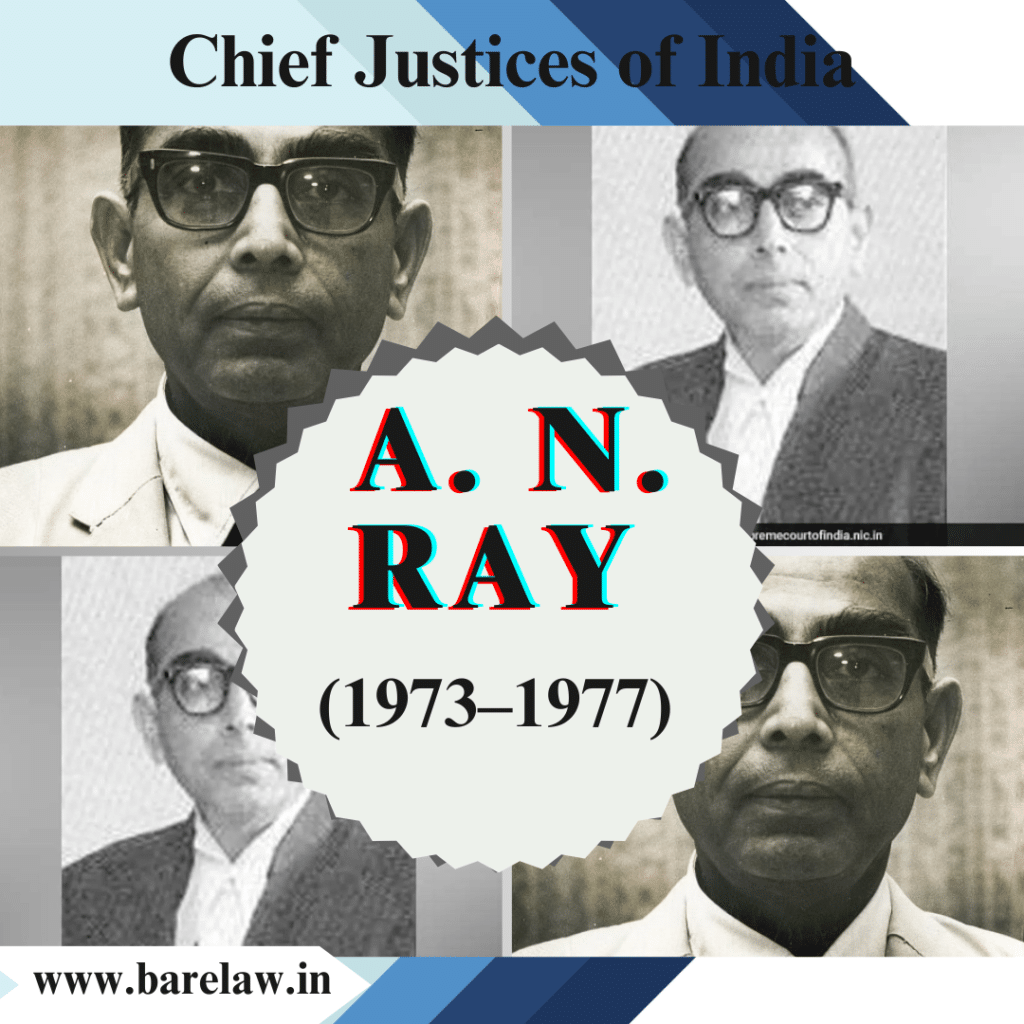
Table of Contents
A.N. Ray: India’s Chief Justice Who Shaped Legal History
A.N. Ray: India’s Chief Justice Who Shaped Legal History
In the annals of India’s legal history, the tenure of Chief Justice A.N. Ray from 1973 to 1977 stands as a pivotal period of transformation and evolution. A.N. Ray’s journey as the Chief Justice of India left an indelible mark on the country’s judiciary, and his landmark decisions continue to influence legal discourse to this day. This article delves into the life, legacy, and enduring impact of one of India’s most influential jurists.
Early Life and Career:
Avinash Narayan Ray, born on August 1, 1909, in Bengal, was a bright and inquisitive mind from a young age. His educational journey led him to the prestigious University of Calcutta and later to the University of Oxford, where he honed his legal acumen. Upon returning to India, he embarked on a remarkable legal career, eventually rising to the apex of the Indian judiciary.
A Visionary Chief Justice:
A.N. Ray assumed office as the Chief Justice of India during a period of significant legal and political turmoil. His tenure coincided with the declaration of the state of emergency in 1975, a time when the judiciary’s independence faced unprecedented challenges. It was under his leadership that the Indian Supreme Court had to make critical decisions that would shape the nation’s destiny.
Landmark Decisions:
One of the most notable decisions during A.N. Ray’s tenure was the Kesavananda Bharati case in 1973. This landmark judgment established the doctrine of the “Basic Structure” of the Indian Constitution, asserting that certain fundamental principles could not be altered even through constitutional amendments. This ruling served as a crucial safeguard for India’s democratic and secular character.
In the Maneka Gandhi case, Chief Justice Ray’s bench widened the scope of personal liberty under Article 21 of the Indian Constitution, emphasizing that the right to life and personal liberty were of paramount importance and couldn’t be deprived arbitrarily. This decision significantly strengthened the protection of individual rights in India.
Controversy and Criticism:
A.N. Ray’s tenure was not without its share of controversy. His appointment as Chief Justice, superseding three senior judges, sparked a fierce debate within the legal fraternity. Many viewed it as a political maneuver, eroding the judiciary’s independence. The subsequent declaration of the emergency and his alignment with the government led to further criticism.
Legacy and Influence:
Despite the controversies, A.N. Ray’s legacy as Chief Justice remains influential in shaping the Indian legal landscape. His judgments, especially in cases like Kesavananda Bharati and Maneka Gandhi, set enduring precedents that continue to guide the Indian judiciary in interpreting the Constitution and upholding individual rights. His commitment to justice, even in trying times, underscored the importance of an independent judiciary as a cornerstone of democracy.
Judicial Reforms:
A.N. Ray’s tenure also witnessed initiatives to modernize and streamline the Indian judiciary. He recognized the need for reforms to address the mounting case backlog and improve the efficiency of the legal system. Although not all of his proposed reforms were implemented, his efforts laid the groundwork for future advancements in the Indian judicial system.
Conclusion:
Chief Justice A.N. Ray’s time at the helm of India’s judiciary was marked by challenges, controversies, and landmark decisions. His legacy continues to cast a long shadow over the Indian legal landscape, reminding us of the judiciary’s pivotal role in upholding the Constitution and safeguarding individual rights. As we reflect on his tenure, it is essential to recognize the enduring impact of his judgments and the contributions he made to India’s legal history.





